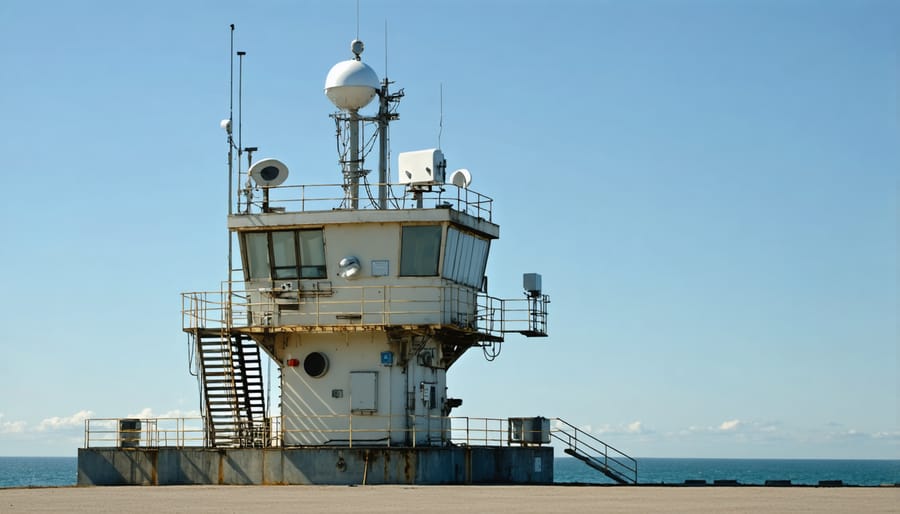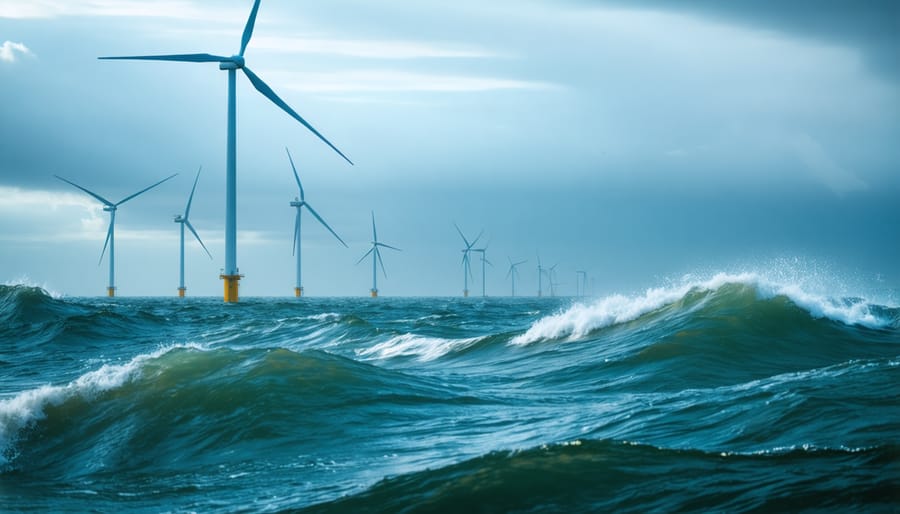How U.S. Coastal Research Protects European Energy Infrastructure

The U.S. Coastal Research Program (USCRP) stands at the forefront of protecting critical energy infrastructure across the Atlantic basin, delivering vital insights that reshape European coastal defense strategies. By combining advanced monitoring systems, predictive modeling, and real-time data analysis, this pioneering initiative has revolutionized our understanding of coastal vulnerabilities affecting energy facilities. European stakeholders increasingly rely on USCRP’s comprehensive research framework, which has already strengthened the resilience of over 200 coastal energy installations through innovative adaptation strategies. From studying storm surge impacts on power plants to developing nature-based solutions for offshore wind infrastructure protection, the program’s findings directly address Europe’s pressing coastal energy security challenges. The research seamlessly integrates climate change projections with practical engineering solutions, offering European facility operators concrete pathways to enhance their coastal protection measures while ensuring sustainable energy production in increasingly volatile coastal environments.
The Critical Role of U.S. Coastal Research
Major Research Focus Areas
The U.S. Coastal Research Program focuses on critical areas that directly impact coastal infrastructure and energy facilities. Storm surge analysis remains a primary focus, utilizing advanced modeling techniques to predict and mitigate potential impacts on coastal installations. Research into sea-level rise examines both immediate and long-term threats, helping develop coastal resilience strategies that protect vital energy infrastructure.
Erosion control research encompasses innovative solutions for shoreline protection, including nature-based approaches and engineered barriers. Scientists study sediment transport patterns, wave dynamics, and coastal geology to develop effective protection measures. The program also investigates the interaction between offshore energy installations and coastal processes, providing valuable insights for European coastal facilities.
Additional focus areas include ecosystem restoration, water quality monitoring, and the development of sustainable coastal management practices. This comprehensive research approach ensures that findings can be applied to protect coastal energy infrastructure while maintaining environmental balance.
Technology and Innovation
The U.S. coastal research program employs cutting-edge technology to monitor and predict coastal changes with unprecedented accuracy. Advanced remote sensing systems, including high-resolution satellite imagery and LiDAR technology, enable researchers to track shoreline movements, erosion patterns, and sediment transport in real-time. These monitoring systems are complemented by a network of smart buoys and underwater sensors that collect data on wave patterns, water quality, and ocean currents.
Predictive modeling has evolved significantly through machine learning algorithms and artificial intelligence applications. These sophisticated tools process vast amounts of environmental data to forecast storm impacts, sea-level rise scenarios, and potential threats to coastal infrastructure. The program utilizes digital twin technology to create virtual replicas of coastal environments, allowing researchers to simulate various climate scenarios and test adaptation strategies.
Notable innovations include automated drone systems for rapid post-storm damage assessment and integrated early warning systems that combine multiple data sources for more accurate coastal hazard predictions. This technological framework provides crucial insights for protecting energy infrastructure and developing resilient coastal management strategies applicable to European coastal regions.

Protecting Energy Infrastructure
Risk Assessment Methods
The U.S. Coastal Research Program employs sophisticated assessment methods to identify and evaluate vulnerabilities in coastal energy installations. These methods combine traditional engineering approaches with cutting-edge digital technologies to create comprehensive risk profiles for coastal infrastructure.
Site-specific vulnerability assessments begin with detailed topographical and bathymetric surveys, utilizing advanced LiDAR technology and high-resolution satellite imagery. These surveys help researchers understand how terrain features and water dynamics might affect coastal installations during extreme weather events.
Modeling software plays a crucial role in risk assessment, simulating various scenarios including storm surges, sea-level rise, and erosion patterns. These models incorporate historical data and climate projections to predict potential impacts on energy infrastructure over different time scales.
Field monitoring systems provide real-time data through an array of sensors that measure wave heights, water levels, wind speeds, and structural responses. This continuous monitoring helps identify emerging risks before they become critical issues.
The program also emphasizes social vulnerability assessment, considering how damage to coastal energy installations might affect local communities and economies. This holistic approach ensures that risk mitigation strategies account for both technical and social factors.
Risk assessment findings are regularly shared with European coastal authorities and energy operators, facilitating knowledge transfer and helping improve coastal infrastructure resilience across the Atlantic.
Adaptive Solutions
The U.S. Coastal Research Program has developed innovative protective measures based on extensive research findings, focusing on infrastructure resilience and environmental sustainability. These adaptive solutions incorporate advanced modeling techniques and real-world data to create comprehensive protection strategies for coastal energy facilities.
Key implementations include the development of climate-resilient power networks that can withstand severe weather events while maintaining operational efficiency. These systems utilize smart sensors and predictive analytics to anticipate and respond to potential threats, ensuring continuous power supply during extreme conditions.
The program has successfully implemented nature-based solutions, such as engineered wetlands and living shorelines, which provide dual benefits of infrastructure protection and ecosystem preservation. These measures have proven particularly effective in protecting coastal energy installations while supporting local biodiversity.
Advanced storm surge barriers and flood defense systems have been integrated into existing infrastructure, incorporating flexible design elements that can adapt to changing environmental conditions. These solutions are specifically engineered to protect critical energy facilities while maintaining their operational capacity during extreme weather events.
The research program has also pioneered innovative monitoring systems that provide real-time data on coastal conditions, enabling rapid response to emerging threats and optimization of protective measures. These adaptive solutions serve as valuable models for European coastal communities facing similar challenges in protecting their energy infrastructure.

European Applications and Benefits
Cross-Atlantic Knowledge Transfer
The adaptation of U.S. coastal research findings to European contexts has proven instrumental in enhancing coastal resilience across the Atlantic. European stakeholders have successfully integrated American methodologies for storm surge prediction and coastal erosion management, tailoring these approaches to address unique European geographical and climatic conditions.
Key findings from U.S. research programs have been particularly valuable in protecting critical energy infrastructure along European coastlines. For instance, innovative barrier designs developed for Gulf Coast facilities have been modified to suit North Sea wind farms and coastal power stations, while American sediment transport models have helped optimize the placement of European marine energy installations.
European adaptation efforts have focused on three primary areas: infrastructure hardening techniques, ecosystem-based defense strategies, and emergency response protocols. The transfer of knowledge has been facilitated through collaborative research initiatives, joint workshops, and regular exchanges between coastal management experts from both continents.
Notable success stories include the implementation of modified U.S. living shoreline concepts along the Dutch coast and the adaptation of American beach nourishment techniques for Mediterranean coastal communities. These applications demonstrate how U.S. research findings can be effectively translated to address European coastal challenges while accounting for local environmental conditions and regulatory frameworks.

Future-Proofing European Installations
Recent findings from U.S. coastal research programs are being strategically adapted to enhance energy infrastructure resilience across European installations. By implementing research-based solutions, European facilities are developing robust protection measures against rising sea levels, extreme weather events, and other climate-related challenges.
Key adaptations include innovative flood barrier systems inspired by U.S. coastal defence mechanisms, upgraded drainage solutions that account for increased precipitation patterns, and reinforced foundation designs that better withstand storm surges. These improvements are particularly crucial for coastal energy facilities, where environmental pressures are most acute.
The implementation strategy focuses on three core areas: structural reinforcement, operational flexibility, and systematic monitoring. Advanced materials testing from U.S. research has led to more durable protective coatings for marine-exposed equipment, while automated monitoring systems provide real-time data for predictive maintenance.
European installations are also adopting adaptive management approaches, incorporating flexible design elements that can be modified as environmental conditions change. This forward-thinking strategy ensures that today’s infrastructure investments remain effective well into the future, protecting critical energy assets while maintaining operational efficiency in an evolving climate landscape.
The U.S. Coastal Research Program continues to demonstrate its vital role in advancing our understanding of coastal dynamics and developing innovative solutions for coastal protection. Through its comprehensive research initiatives, the program has successfully bridged the gap between scientific discovery and practical applications, particularly in areas critical to energy infrastructure resilience. European stakeholders have found significant value in the program’s findings, especially regarding storm surge protection, erosion control, and adaptive management strategies for coastal energy facilities.
Looking ahead, the program is set to expand its international collaborations, with increased focus on developing transferable solutions that can benefit European coastal communities and energy infrastructure. Recent technological advancements in monitoring systems and predictive modeling are expected to enhance the program’s capability to address emerging challenges posed by climate change and rising sea levels.
As coastal regions worldwide face increasing environmental pressures, the program’s commitment to sustainable coastal management and protection strategies remains crucial. The continued integration of research findings into practical applications will help ensure more resilient coastal infrastructure and better-protected energy facilities across both American and European coastlines.
Leave a Reply